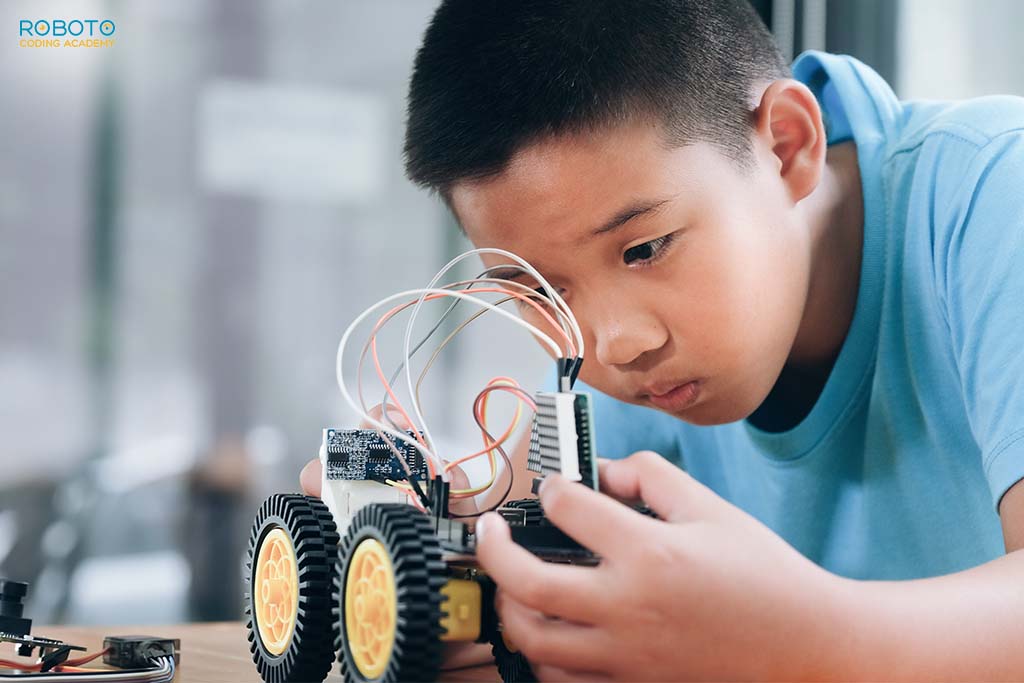Are you fascinated by robots and eager to learn how to program them? You’re not alone. As robotics continues to revolutionize industries and everyday life, the demand for skilled robotics programmers is on the rise. This comprehensive guide will walk you through the essentials of robotic coding for beginners, providing you with the knowledge and resources to embark on your exciting journey into the world of robotics.

Understanding the Basics of Robotic Coding
Robotic coding is the process of writing instructions that control a robot’s actions and behaviors. At its core, it involves combining programming skills with an understanding of robotics principles. For beginners, it’s essential to start with the fundamentals of programming. Languages like Python, Java, and C/C++ are commonly used in robotics due to their versatility and extensive libraries1. Python, in particular, is an excellent choice for beginners due to its simplicity and readability. Before diving into robot-specific programming, make sure to grasp essential concepts such as variables, loops, conditionals, and functions6.
Choosing the Right Platform for Learning
Selecting an appropriate platform is crucial for beginners in robotic coding. Many experts recommend starting with robotics kits that provide both hardware and software components. These kits often come with user-friendly interfaces and step-by-step guides, making them ideal for newcomers. Popular platforms for beginners include Arduino-based robots, Raspberry Pi-based robots, and LEGO Mindstorms1. Additionally, block-based programming environments like Scratch can serve as an excellent introduction to coding concepts before transitioning to text-based languages5.

Getting Hands-on with Your First Robot Project
Once you’ve chosen a platform and familiarized yourself with basic programming concepts, it’s time to start your first robot project. Begin with simple tasks such as making your robot move forward and backward, turn, or react to sensor inputs1. As you gain confidence, you can progress to more complex behaviors like line following or obstacle avoidance. Remember, the key to learning is hands-on experience. Don’t be afraid to experiment and make mistakes – they’re an essential part of the learning process.
Mastering the Unicycle Model of Control
As you advance in your robotic coding journey, you’ll encounter more sophisticated control models. One such model is the unicycle model of control, which simplifies robot movement by focusing on velocity (v) and angular velocity (ω) instead of individual wheel speeds. This approach allows for more intuitive programming of robot movement3. Understanding and implementing this model will give you greater control over your robot’s behavior and prepare you for more advanced robotics projects.
Exploring Sensors and Actuators in Robotics
A crucial aspect of robotic coding is working with sensors and actuators. Sensors allow robots to perceive their environment, while actuators enable them to interact with it. Familiarize yourself with common sensors like ultrasonic sensors, infrared sensors, and encoders. Learn how to read sensor data and use it to make decisions in your code. Similarly, understand how to control various types of actuators, such as motors and servos, to create desired movements and actions in your robot12.
Leveraging Online Resources and Communities
The field of robotics is vast and constantly evolving, making continuous learning essential. Fortunately, there are numerous online resources available for aspiring robotics programmers. Platforms like Codecademy, Coursera, and edX offer structured courses on programming and robotics6. Additionally, joining online communities and forums can provide valuable support, inspiration, and opportunities to collaborate with fellow enthusiasts. Don’t hesitate to seek help when you encounter challenges – the robotics community is generally welcoming and supportive of newcomers.

Applying Problem-Solving Skills in Robotics
Robotics is as much about problem-solving as it is about coding. As you work on projects, you’ll inevitably encounter obstacles that require creative solutions. Embrace these challenges as opportunities to improve your skills. Develop a systematic approach to troubleshooting, breaking down complex problems into smaller, manageable parts. Remember that robotics often involves iterative development – don’t expect perfection on the first try. Instead, focus on continuous improvement and learning from each iteration4.
Future Trends and Career Opportunities in Robotics
As you progress in your robotic coding journey, it’s worth keeping an eye on emerging trends in the field. Artificial Intelligence (AI) and Machine Learning (ML) are increasingly being integrated into robotics, opening up new possibilities for autonomous and adaptive robots. The Internet of Things (IoT) is also playing a significant role in connecting robots to broader networks and data sources. Familiarizing yourself with these technologies can give you a competitive edge in the rapidly evolving robotics industry7.
In conclusion, robotic coding for beginners is an exciting and rewarding pursuit that combines creativity, problem-solving, and technical skills. By starting with the basics, choosing the right platform, and gradually building your knowledge through hands-on projects, you can develop a strong foundation in robotics programming. Remember to leverage online resources, engage with the robotics community, and stay curious about new developments in the field. With dedication and practice, you’ll be well on your way to becoming a proficient robotics programmer, ready to contribute to this fascinating and impactful field.
